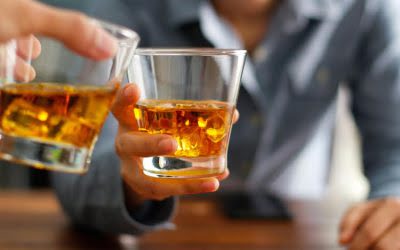Alcohol use disorder Overview
Initially, disulfiram was given in larger dosages to produce aversion conditioning to alcohol by making the patients very sick if they drank. Later, after many reported severe reactions (including some deaths), Antabuse https://trading-market.org/12-sample-farewell-letters-format-examples-and-how/ was administered in smaller dosages to support alcohol abstinence. Your doctor may suggest a medicine to help treat your alcohol use disorder. Medicines are usually used together with talk therapy and support groups.
- They can help you cope, make a treatment plan, prescribe medications and refer you to support programs.
- The good news is that no matter how severe the problem may seem, most people with AUD can benefit from some form of treatment.
- Contact a health care provider if you have questions about your health.
In addition, they may have a whole host of other alcohol-related physical and psychosocial problems. Management of these individuals needs skill, knowledge and fortitude. However, opportunities Oxford House Wikipedia should not be lost, whether patients are admitted or not, to assess their needs and refer appropriately to alcohol liaison services or other statutory/non-statutory bodies.
Cognitive-Behavior Therapy (CBT)
Furthermore, obtaining a detailed family history of AUDs and substance use disorders, as well as personal and family history of any psychiatric disorders, is essential for the evaluation process. A third definition, behavioral in nature, defines alcoholism as a disorder in which alcohol assumes marked salience in the individual’s life and in which the individual experiences a loss of control over its desired use. In this definition, alcoholism may or may not involve physiological dependence, but invariably it is characterized by alcohol consumption that is sufficiently great to cause regret and repeated physical, mental, social, economic, or legal difficulties. Clinicians call such a behavioral disorder a disease because it persists for years, is strongly hereditary, and is a major cause of death and disability.
The way this process works is when people normally drink alcohol, endorphins are released into the brain, and this reinforces the behavior of drinking alcohol. Much like when Pavlov’s dogs were presented with food when a bell was rung, these dogs became conditioned to salivate at the sound of the bell alone. However, when these dogs continued to be presented with the ringing bell and no food, the salivating stopped.
Signs and symptoms
The most promising of these medications are the opioid antagonist, naltrexone (Revia), and acamprosate, a glutamate antagonist. These drugs, used separately and in combination, are likely to be the first of many pharmacotherapies targeting multiple neurotransmitters. See related patient information handout about problem drinking, written by the authors of this article.

They are prescribed by a primary care physician or other health professional and may be used alone or in combination with counseling. Behavioral treatments are aimed at changing drinking behavior through counseling. They are led by health professionals and supported by studies showing they can be beneficial. When asked how alcohol problems are treated, people commonly think of 12-step programs or 28-day inpatient rehab but may have difficulty naming other options.
Alcoholics Anonymous (AA) and 12-Step Facilitation Therapy
Care must be taken to maintain the patient’s general condition during the withdrawal period. Dehydration should be corrected by use of oral fluids; intravenous fluids should be avoided as overhydration is a serious potential hazard. Although most intoxicated patients are cooperative, some may be belligerent, abusive and violent. The overriding priority in this situation is to ensure the patient’s safety and that of attending staff, relatives/friends and bystanders. It is equally important to try to assess whether the patient is aggressive and disinhibited simply because they are intoxicated or because other factors, such as injury or infection, have added a component of confusion or delirium. Group therapy or a support group can help during rehab and help you stay on track as life gets back to normal.
Remember that your loved one is ultimately responsible for managing his or her illness. The U.S. Food and Drug Administration (FDA) has approved three medications for treating alcohol dependence, and others are being tested to determine whether they are effective. Three medications are currently approved in the United States to help people stop or reduce their drinking and prevent relapse.
More than 14 million adults ages 18 and older have alcohol use disorder (AUD), and 1 in 10 children live in a home with a parent who has a drinking problem. The information on this site should not be used as a substitute for professional medical care or advice. Contact a health care provider if you have questions about your health. The patients in his trial put on a specialized helmet and lie down on an MRI table.

